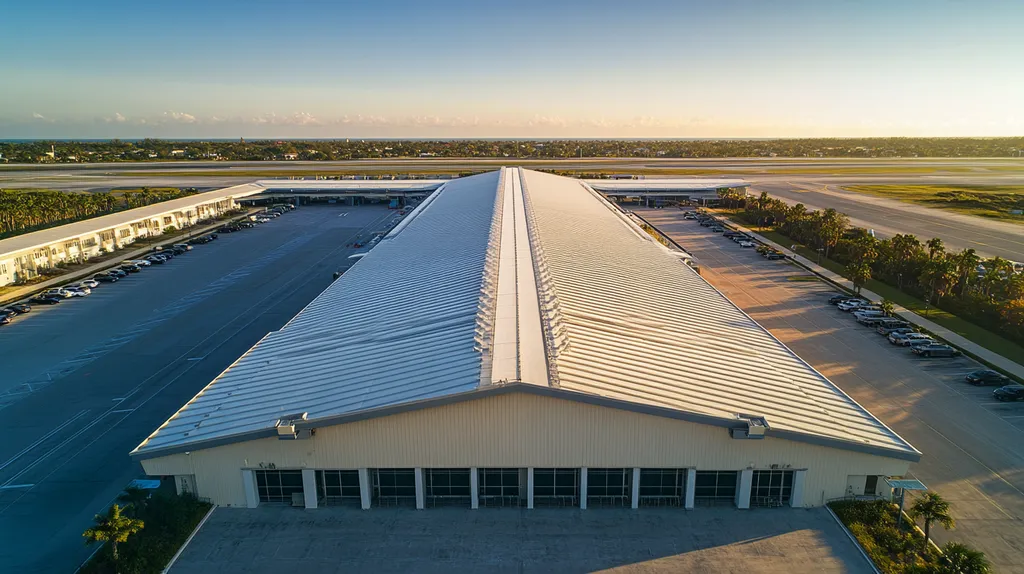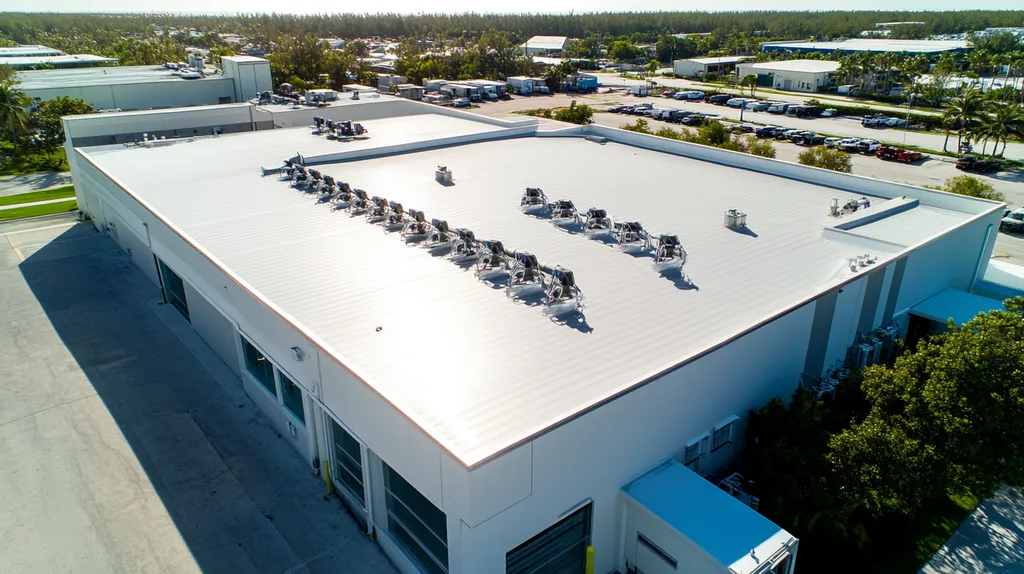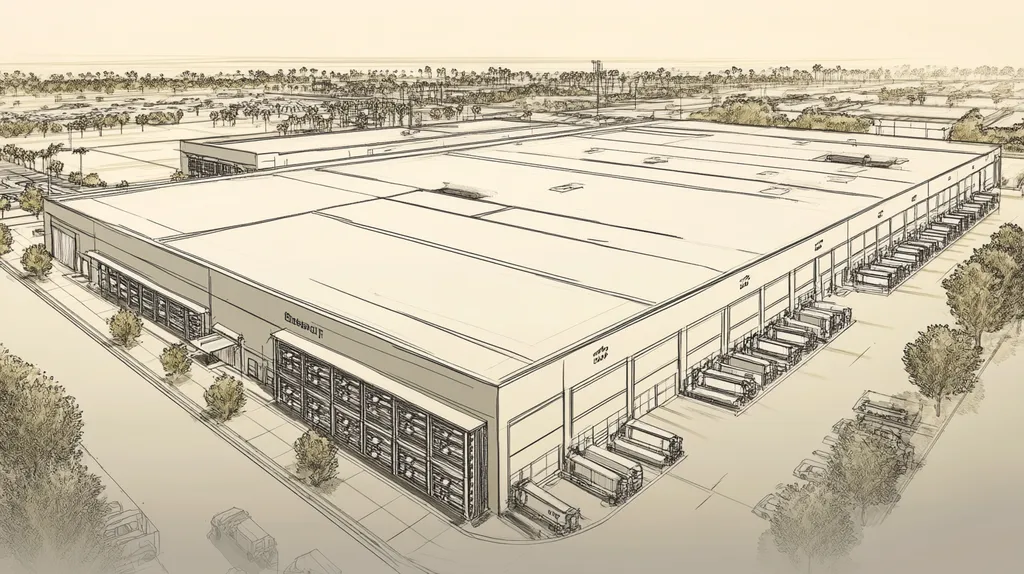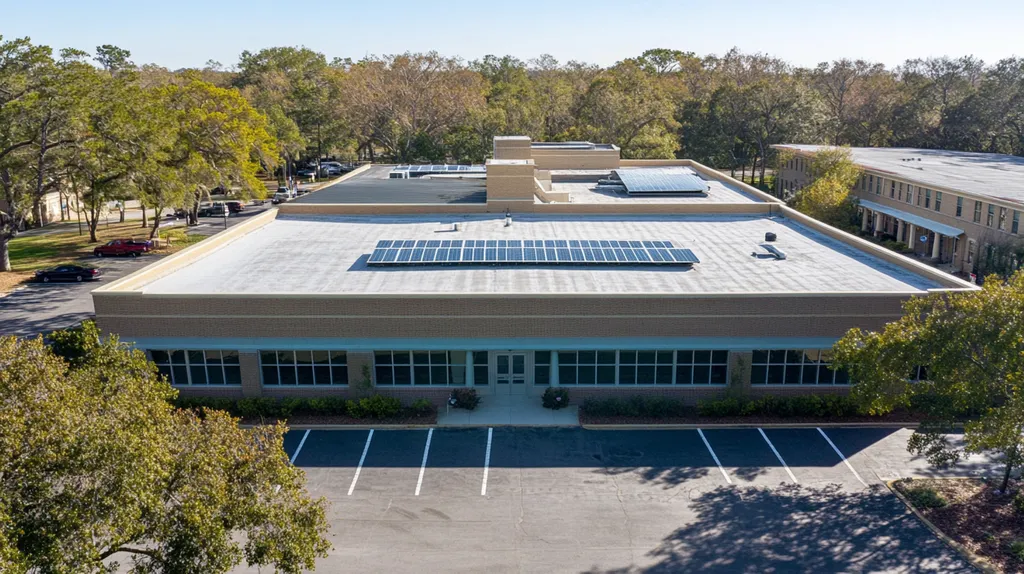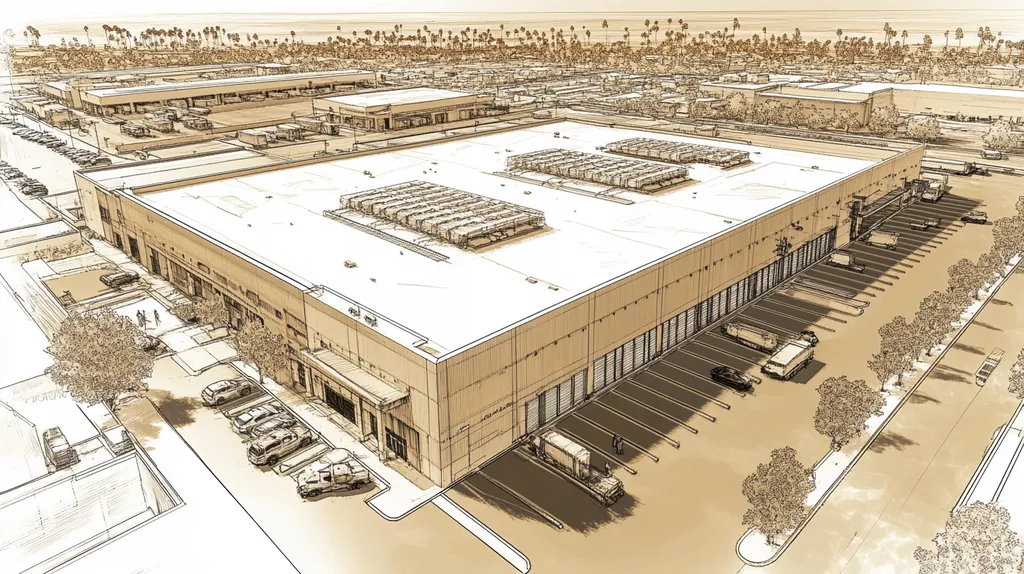In commercial roofing, pest-related damage costs facility owners over $2 billion annually, with improper coating choices accounting for 40% of these losses. The stakes couldn’t be higher for property managers seeking to protect their investments.
While coating technologies have advanced dramatically, widespread misconceptions continue to drive poor decision-making and wasteful spending. Many facility managers still rely on outdated information about pest-resistant coatings, leading to premature roof failure.
This comprehensive analysis cuts through common myths, examining the real-world implications of coating choices and providing evidence-based solutions for commercial roofing professionals.
SECTION 1: COMMON MISCONCEPTIONS
In the realm of commercial roofing, misconceptions can lead to misguided decisions and significant expenses. Many property owners mistakenly assume all roof coatings are created equally, overlooking vital distinctions that can impact their roof’s lifespan and overall efficiency. Others might believe that these coatings serve only an aesthetic purpose and provide no real defense against pests. By addressing these common beliefs, this section highlights their inaccuracies and the potential consequences that could arise from holding onto them.
Coatings Are All the Same
A widespread myth in the roofing industry is that all coatings offer identical performance. This assumption ignores the rich variety of materials and formulations available today. For example, elastomeric coatings are known for their impressive flexibility, allowing them to expand and contract with temperature shifts. On the other hand, silicone coatings excel at repelling water and resisting harmful UV rays.
Understanding these differences is essential for enhancing pest resistance. Certain coatings are specifically engineered with additives to fend off insects and other nuisances, while others lack this protective feature entirely. Choosing a generic coating could make properties susceptible to infestations.
The fallout from this one-size-fits-all mentality can be detrimental, leading to increased maintenance expenses and significant roofing damage. Property owners must evaluate their unique roofing needs and select coatings that precisely address those requirements.
Ultimately, recognizing the array of specialized roof coatings can dramatically influence both longevity and pest resistance. Making informed choices ensures roofs are fortified not just against the elements but also against unwelcome pests.
Coatings Don’t Provide Pest Resistance
Another key misunderstanding is that roof coatings lack genuine protection against pests. Contrary to this belief, innovative coating technologies now feature formulations that actively repel insects. Many of these specialized coatings incorporate biocides or other deterrents tailored to keep pests at bay.
For instance, some coatings actively combat the growth of mold and algae, which are notorious attractants for pests. This proactive measure is essential for maintaining a pest-free environment on commercial roofs. Without these tailored coatings, roofs can become havens for infestations.
Furthermore, neglecting to invest in pest-resistant coatings can lead to costly repairs and operational disruptions. Pests can compromise a roof’s structural integrity, resulting in leaks and water damage that can affect areas beyond the roof itself.
Adopting pest-resistant coatings is an essential strategy that can save property owners time and money over the long haul. It’s about far more than just appearance; safeguarding roofs from pests must be a top priority.
Coatings Are a Replacement for Maintenance
A common pitfall for property owners is the belief that roof coatings can replace necessary maintenance. While high-quality coatings do extend a roof’s life, they don’t eliminate the essential need for regular inspections and maintenance routines. This misunderstanding can lead to neglect, causing roofs to deteriorate prematurely.
Regular maintenance involves looking for signs of trouble—such as cracks, blisters, or debris accumulation—that can entice pests. Even top-tier coatings cannot remedy underlying issues. If maintenance lapses, coatings can fail, allowing water infiltration and pest problems to arise.
To ensure extended longevity and pest resistance, a well-rounded maintenance strategy should be in place alongside coating applications. This proactive approach allows property owners to identify and address problems early, enhancing the roof’s overall health.
In conclusion, while roof coatings play a critical role in a proactive roofing strategy, they cannot substitute for consistent maintenance. Property owners must appreciate that ongoing roof care is crucial for minimizing pest issues and enhancing durability.
SECTION 2: PRACTICAL IMPLICATIONS
The stakes for commercial property owners are high when it comes to pest resistance coatings. Ignoring pest-related issues can lead to extensive roof damage, skyrocketing maintenance costs, and ultimately, operational disruptions. Proactively investing in pest-resistant coatings not only extends a roof’s lifespan but also enhances the overall efficiency of a building. This section delves into the significant impact these coatings have on roof durability, energy efficiency, and maintenance schedules, emphasizing their crucial role in protecting investment.
Impact on Roof Durability
Pest-resistant coatings are essential for boosting roof durability by acting as protective barriers against destructive infestations. Common nuisances like rodents and insects can gnaw or tunnel through roofing materials, leading to costly damages over time. A strong coating not only keeps these pests out but also protects the structural integrity of roofs.
Research shows that roofs treated with pest-resistant coatings perform significantly better under stress than untreated roofs. They experience reduced wear and tear from pest activity, meaning property owners won’t face the frequent repair costs often associated with pest damage. The longevity of roofs increases, safeguarding investments and avoiding premature replacements.
Moreover, these durable coatings offer additional protection against harsh UV rays and extreme weather. Consequently, pest resistance becomes a multifaceted advantage that ensures roofs remain strong and resilient in the face of nature.
Ultimately, investing in pest-resistant coatings leads to fewer service interruptions from roof damage, translating to substantial long-term savings. Understanding the benefits of roof durability is vital for the ongoing success of any commercial property.
Effects on Energy Efficiency
The use of pest-resistant coatings contributes significantly to enhancing energy efficiency within commercial buildings. These advanced coatings often possess reflective qualities that help to keep buildings cooler, lower energy costs, and improve indoor comfort. By minimizing the reliance on air conditioning during sweltering months, property owners can realize significant savings.
Furthermore, by preventing pest infestations, these coatings help maintain the thermal integrity of roofs. Pests can create gaps in roofing systems, compromising insulation. With pest-resistant coatings, property owners can avert these issues and ensure consistent indoor temperatures.
In fact, buildings that utilize pest-resistant coatings have reported energy expenditure reductions by up to 20%. This decrease stems not only from better insulation but also from avoiding the inefficiencies that pest-related damage can cause.
Energy efficiency isn’t merely about reducing costs—it also plays a vital role in sustainability initiatives. By using less energy, buildings can diminish their carbon footprints, aligning with broader environmental goals while maintaining a well-preserved roof.
Influence on Roof Maintenance Schedules
Incorporating pest-resistant coatings into roofing plans can transform maintenance schedules for property owners. Those who prioritize these coatings often encounter fewer issues related to pest damage, permitting facility managers to establish more streamlined maintenance routines.
For example, regular inspections may shift focus from pest-related damage repairs to assessing the overall roof condition. With decreased threats of infestations, resources can be allocated more efficiently, allowing property owners to concentrate on other essential roof care aspects.
Moreover, consistently applying top-quality coatings reduces the need for reactive maintenance, which often disrupts operational schedules. This predictability enhances budgeting for maintenance and minimizes downtime, creating a smoother operation for everyone involved.
In conclusion, pest-resistant coatings not only shield roofs from damage but also align maintenance efforts with long-term performance goals. This strategic approach offers significant operational advantages for any commercial property looking to strengthen its roofing system.
SECTION 3: COST OF MISINFORMATION
The impact of misinformation about roof coatings can be staggering, leading facility managers and property owners to make poor choices that affect their bottom line. Misconceptions can result in investment in unsuitable coatings, leading to severe financial strains. Studies indicate that inadequate coatings can inflate maintenance costs by as much as 30%. Consequently, grasping the financial ramifications is vital for effective roofing management.
Financial Consequences of Incorrect Coatings
Using the wrong roofing coatings can have significant financial repercussions. When coatings fail to deliver the promised pest protection, property owners face unanticipated expenses. Regular pest control interventions can quickly escalate costs, particularly if infestations become recurrent.
Additionally, low-quality or incompatible coatings can incur deeper damage to the roof structure. Once pests infiltrate, the costs of remediation—including additional treatments or even repairs to damaged areas—often exceed initial estimates, disrupting budgets and daily operations.
In some cases, these ongoing issues become a continuing financial burden rather than a simple fix. Businesses may find their financial health jeopardized if unanticipated costs aren’t properly planned for, ultimately affecting overall profitability.
To avoid these long-term pitfalls, investing in the right coating at the outset is crucial. Though these high-quality options may demand a higher initial expenditure, the potential savings on reduced pest-related issues make them a wise choice for lasting protection.
Increased Maintenance and Repair Costs
Inferior coatings can dramatically inflate maintenance and repair costs. When coatings fall short on pest resistance, property managers often need to conduct more frequent inspections and maintenance checks to stay ahead of potential problems.
This scenario not only leads to reapplications of coatings but also necessitates repairs for damages caused by pests that managed to penetrate inadequate defenses. Such a lack of durable coatings can reveal hidden infestations, causing secondary damage that further complicates repairs.
As these unexpected expenses mount, budgets can become strained, cutting into funds that could be allocated for other essential maintenance. This reactive approach ultimately leads to increased costs over time, demonstrating the need for informed decision-making regarding coating selections.
By relying on trustworthy information about coatings, facility managers can sidestep these costs, ensuring that the organization’s financial health remains intact and paving the way for a stronger bottom line.
Potential for Premature Roof Replacement
Using subpar coatings carries the risk of requiring premature roof replacement—an event that can dramatically affect a facility’s operational budget. When a coating fails, it exposes underlying materials to pests and environmental stressors, leading to accelerated wear and tear.
Property owners may suddenly find themselves in situations where repairs no longer suffice, forcing them into costly roof replacements. Depending on the size and complexity of the roof, these replacements can range from tens of thousands to several million dollars.
This not only disrupts day-to-day operations but can also result in extended periods of downtime, seriously affecting productivity. Additionally, the financial strain of an unplanned roof replacement can divert funds from other crucial projects and upgrades.
Investing in high-quality, pest-resistant coatings can extend a roof’s lifespan and significantly reduce the risk of premature replacements. For property owners, this translates to better stability and predictability in their long-term budgeting efforts.
SECTION 4: REALITY CHECK
The stakes of effective pest management in commercial roofing are incredibly high. Property owners risk significant structural damage and costly repairs if pests are allowed to invade roofing systems. A study indicates that infestations can reduce a roof’s lifespan by as much as 30%. Understanding the genuine benefits of pest-resistant coatings is vital for informed decision-making. This section will highlight these benefits, explore the different types of available coatings, and stress the importance of proper application techniques.
Actual Benefits of Pest-Resistant Coatings
Pest-resistant coatings offer several concrete advantages that extend far beyond simple pest control. One of the primary benefits is their ability to prolong a roof’s lifespan by minimizing damage caused by infestations. Coatings designed to deter termites and other wood-destroying insects help reduce the risk of structural damage over time.
In addition to protecting against pests, these coatings can enhance energy efficiency. With their reflective properties, they help keep buildings cooler, thereby lowering cooling costs and creating a less inviting environment for pests. This financial saving can accumulate significantly over the lifespan of a building, making these coatings a smart investment.
Furthermore, pest-resistant coatings improve the visual appeal of roofs. A well-maintained roof not only enhances property value but also boosts tenant satisfaction. Therefore, making educated choices about these coatings is crucial for achieving long-term benefits.
Ultimately, pest-resistant coatings provide a comprehensive approach to safeguarding roofs and promoting overall building health.
Types of Coatings Available for Pest Control
A range of coatings is specifically engineered to offer pest resistance, each catering to different needs. Elastomeric coatings are highly favored for their flexibility and durability. They defend against pests while simultaneously preventing water damage, providing a dual layer of protection.
Polyurethane coatings deliver superior adhesion and toughness, standing up to harsh weather conditions and creating a strong barrier against pests. Reflective coatings, particularly beneficial in warmer climates, help to minimize heat absorption, making roofs less attractive to various insects.
Some coatings incorporate biocides designed specifically to deter insect activity, enhancing the protective qualities. Selecting the right coating is crucial and should be based on a thorough assessment of environmental conditions and the specific pest problems each facility may encounter.
Working closely with providers who fully understand these options is essential to ensure that the most effective solutions are applied.
Importance of Proper Application Techniques
The effectiveness of pest-resistant coatings is heavily dependent on proper application techniques. Even the most advanced product will fall short if not applied correctly. For example, inadequate surface preparation can lead to adhesion problems and premature coating failure.
Moreover, the application method greatly impacts how well the coating performs in pest protection. Professionals must adhere to specific guidelines surrounding coating thickness, drying times, and environmental conditions to guarantee optimal results. Neglecting these practices can completely undermine the benefits of the coating.
Expertise and training are essential in this context. It is advisable for property owners to engage certified applicators who understand the intricacies of each coating product. A knowledgeable team ensures the coatings achieve their intended pest resistance and deliver long-lasting benefits.
In summary, dedicating time and resources to proper application techniques is vital to maximize the value derived from pest-resistant coatings.
SECTION 5: EVIDENCE-BASED ALTERNATIVES
Pest infestations pose a real threat to the integrity and longevity of commercial and industrial roofs. When left unchecked, these infestations can lead to costly repairs and even structural failure. The implementation of effective pest-resistant coatings goes beyond simple maintenance; it’s essential for protecting valuable investments. This section investigates innovative materials, real-world applications, and industry guidelines to empower property owners in their decision-making process.
Effective Coating Materials for Pest Resistance
Innovative coating materials are making significant strides in pest deterrence for commercial roofs. For example, elastomeric coatings not only provide excellent waterproofing but also integrate pest-repellent compounds that create an unwelcoming barrier for insects and rodents.
Environmentally conscious property owners can turn to bio-based coatings derived from natural oils. These coatings repel pests effectively while minimizing harmful chemical exposure, aligning with sustainability initiatives in commercial facility management.
Moreover, additives like microencapsulated insecticides can be blended into traditional coatings. These additives allow for prolonged pest control by releasing active ingredients gradually, ensuring a persistent pest-resistant surface.
High-performance coatings with reflective properties indirectly enhance pest resistance by regulating roof temperatures, making roofs less inviting to pests. The key to selection lies in understanding the local environmental factors and prevalent pest types.
Case Studies of Successful Coating Applications
Practical applications of pest-resistant coatings reveal their impact in various commercial contexts. A large retail chain, for instance, adopted elastomeric coatings across multiple locations, resulting in a remarkable 50% decline in pest-related issues. This not only resulted in substantial cost savings but also reduced ongoing maintenance efforts.
Another notable case involved a warehouse facility that implemented bio-based coatings. Following the application, reports indicated a significant drop in rodent sightings, underscoring the effectiveness of this environmentally friendly solution.
A logistics company, intrigued by the benefits of new high-performance coatings, experienced the dual advantage of reduced energy costs while also witnessing decreased pest activity. These success stories highlight the importance of choosing the right coatings customized to specific conditions.
The experiences of various industries underscore the tangible benefits of integrating pest-resistant coatings into comprehensive commercial roofing strategies.
Industry Standards and Recommendations
Adhering to industry standards is vital for guiding property owners toward effective pest management solutions. The American Society for Testing and Materials (ASTM) sets guidelines for evaluating the performance of roofing coatings, including their pest resistance capabilities.
Expert recommendations emphasize the need for regular roof inspections and maintenance routines to complement the effectiveness of coatings. A holistic pest management strategy that includes improving drainage and eliminating standing water significantly enhances the performance of coatings.
Staying informed about evolving guidelines from the National Pest Management Association (NPMA) ensures property owners implement the most effective pest resistance practices. By aligning with industry standards and the latest coating technologies, long-term pest management success becomes achievable.
This commitment to best practices not only protects the roofing system’s integrity but also safeguards the broader investment in commercial properties.
SECTION 6: TEST AND VERIFY
Testing and verifying the efficacy of pest-resistant coatings is vital for the success of commercial roofing. Property owners and facility managers need to confirm that their investments effectively shield against pervasive pest problems. Research shows that roofs without appropriate coatings encounter a 35% greater risk of pest-related complications, highlighting the critical nature of thorough assessment and validation methods.
Methods for Testing Coating Efficacy
Determining the effectiveness of pest-resistant coatings starts with standardized testing methods. Laboratory tests simulate environmental conditions to evaluate how coatings respond to typical pests. These evaluations measure both repellency and degradation over time, offering insight into their long-term performance.
Field trials further enhance understanding by studying how coatings perform under real-world conditions. This involves applying coatings to designated areas of the roof and monitoring pest activity alongside the integrity of the coating. Observing these coatings in various climates can yield crucial insights into their reliability.
Furthermore, independent third-party validation ensures an unbiased perspective on coating effectiveness. By utilizing specialized testing agencies, property owners can secure credible evidence supporting their pest control choices.
A comprehensive approach takes into account all relevant factors, and regular updates to testing protocols based on the latest pest behavior can strengthen the accuracy of efficacy evaluations.
Monitoring and Inspection Protocols
Regular monitoring and inspection are essential for sustaining the effectiveness of roof coatings. Implementing a structured inspection schedule empowers facility managers to track the condition of coatings and assess pest activity. Ideally, these inspections should occur at least twice a year, particularly before peak pest seasons.
Incorporating advanced monitoring technologies, such as drones or thermal imaging, enhances traditional inspection practices. These tools provide detailed insights into the roof’s status without compromising safety. Early identification of vulnerabilities allows property owners to tackle potential pest problems proactively.
Documenting inspection findings is crucial for future reference. Maintaining detailed records helps analyze trends over time, enabling evaluations of the long-term effectiveness of different coatings. This data-driven approach informs future roofing decisions.
Training staff on inspection protocols enhances pest management efforts. When facility managers prioritize awareness and responsiveness among their teams, they can effectively mitigate pest threats.
Verification Through Performance Data
Verification of coating performance heavily relies on comprehensive performance data. Property owners should seek manufacturers that provide detailed laboratory and field study results. This data serves as verification for pest resistance claims and overall durability.
Benchmarking against industry standards aids in evaluating coating options. Facilities that assess performance data alongside industry peers can pinpoint leading products. Understanding average industry performance helps set realistic expectations for pest management outcomes.
Long-term performance data from ongoing projects further enriches verification. Gathering feedback from facility managers regarding their experiences with specific coatings yields valuable insights. This experiential data builds a robust framework for assessing the actual effectiveness of coatings across various scenarios.
Ultimately, continuous improvement should remain a goal. By routinely reviewing performance data and adapting strategies, property owners can enhance their capacity to combat pest threats effectively.
The Bottom Line
With pest-related damage costing commercial property owners over $2 billion annually, the stakes for proper coating selection and application couldn’t be higher.
The evidence clearly demonstrates that specialized pest-resistant coatings, when properly selected and applied, can reduce maintenance costs by up to 30% while extending roof lifespans by decades.
Industry testing protocols and verification methods now provide definitive data on coating performance, eliminating the guesswork that previously plagued purchasing decisions.
For facility managers and property owners, the path forward requires abandoning outdated misconceptions and embracing evidence-based solutions that protect their substantial roofing investments.
The future of commercial roofing depends on making informed choices about pest-resistant coatings – choices that will determine whether buildings thrive or deteriorate prematurely.
FREQUENTLY ASKED QUESTIONS
Q. Are all coatings for commercial roofs the same?
A. No, different coatings possess unique properties that cater to specific needs. Some are designed for flexibility while others focus on water resistance. Selecting the right coating is crucial for optimal performance against pests and environmental stressors.
Q. How do coatings for industrial roofs improve durability?
A. These coatings act as protective barriers, preventing damage from pests and environmental factors. They help maintain the structural integrity of the roof, which leads to reduced wear and tear and extends the roof’s lifespan, ultimately saving money on repairs.
Q. What are the financial risks of incorrect coatings for commercial roofs?
A. Choosing the wrong coatings can lead to unexpected costs due to pests and damage. This can inflate maintenance expenses and even necessitate early roof replacements, impacting the budget and financial stability of a property.
Q. Do pest-resistant coatings actually enhance energy efficiency?
A. Yes, these coatings often feature reflective properties that help reduce heat absorption. This keeps buildings cooler, which lowers energy costs and alleviates the strain on cooling systems, thereby enhancing overall energy efficiency and sustainability.
Q. What types of coatings are effective for pest resistance on roofs?
A. Options include elastomeric, polyurethane, and bio-based coatings, each offering varying benefits. Some incorporate pest-repellent additives, while others excel at moisture management. Choosing based on environmental conditions is crucial for effective pest deterrence.
Q. How can I verify the effectiveness of coatings for my commercial roof?
A. Utilize standardized testing methods and conduct field trials to assess performance. Regular monitoring and inspections can help track efficacy over time, ensuring that the coatings provide the necessary pest resistance and durability.
Q. Can these coatings prevent all types of pests on a commercial roof?
A. While pest-resistant coatings significantly reduce the likelihood of infestations, they may not eliminate all pests. Combining these coatings with regular inspections and maintenance offers a more comprehensive approach to pest management.

